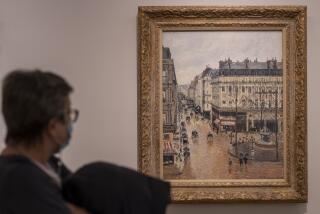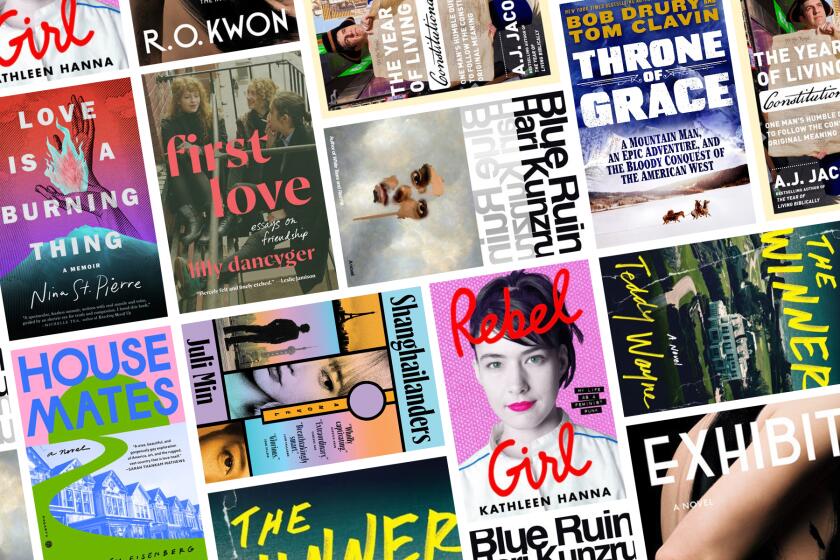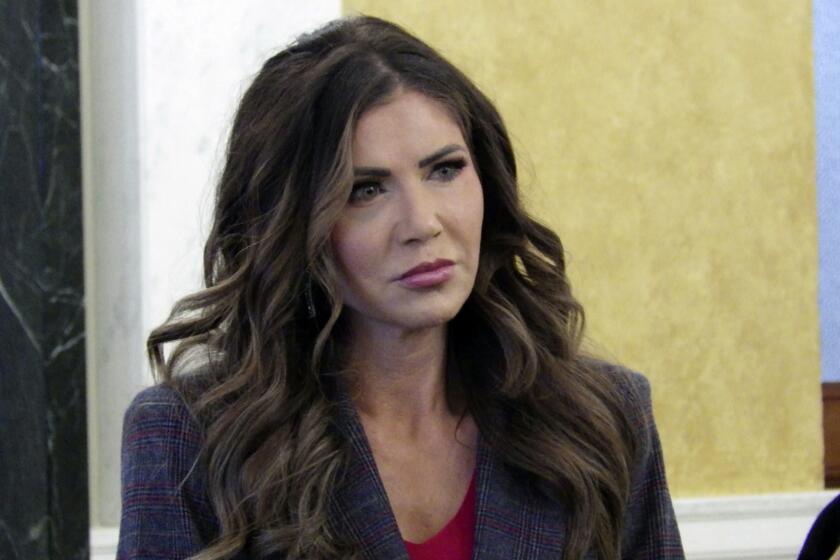Patt Morrison Asks: E. Randol Schoenberg -- for the gold Klimt
The riches and treasures of Europe vacuumed up by Hitler’s Third Reich are still turning up, including some paintings Hitler bought for himself that were just found in a Czech monastery. But most of the Fuhrer’s loot was just that: looted. Once in a while, it gets returned to its rightful owners. Los Angeles lawyer E. Randol Schoenberg joined forces with Maria Altmann in a legal battle to reclaim her family’s collection of paintings, seized by the Nazis in 1938. The artworks, by Gustav Klimt, included a famous portrait of Altmann’s aunt, Adele Bloch-Bauer, that was hanging in plain sight in an Austrian state museum.
The high-stakes, stars-aligned tale of the machinations required to return it (and other works) to the family is told by former Times writer Anne-Marie O’Connor in her new book, “The Lady in Gold,” and here by Schoenberg, who says he only became a lawyer because he couldn’t find a job in journalism.
Your grandfathers were both composers, both Viennese, both Jewish: Arnold Schoenberg and Erich Zeisl. Both fled the Nazis. So even before this case, you weren’t a stranger to this world.
My mom’s mom was my link to the past; she’s the one who really infused me with an interest and love for the old world of Austrian things, and she was best friends with Maria Altmann. I grew up knowing who Maria was. In 1998, this started, when she called me. She was looking to find out about this new law.
I had seen [the Klimt paintings] in Vienna, the first time when I was probably 11 and we went to the Belvedere museum. My mom said, “See that picture? Your grandmother’s best friend Maria Altmann, that’s her aunt, Adele Bloch-Bauer.” Of course I didn’t know any of the history [of the paintings]. But I knew enough of what my own family had gone through, so it was easy for me to dive in and figure out what happened using the documents Maria had and documents found in Vienna. The two sides together told a compelling story.
So it wasn’t “I’m just doing this as a favor for my grandma’s best friend, Maria”?
I was more like a grandson helping out. She would constantly tell me stories about my grandparents, my great-grandparents. It was very personal. It wasn’t just another contract dispute. This was serious. This was about history; getting it right was important.
The [Austrian] minister of education and culture proposed this law to, as she put it, clear the table of Nazi-looted art in [state] museums. It was a very noble goal, and they set up a very broad law, but [the minister] was sure it wouldn’t apply to these paintings. I think they had purposely drawn up the law [that] way. When I put it [all] together, I thought, wow, [we] really do have a case, and the next eight years was convincing them.
Some looted objects can be “anonymized” — jewelry can be broken up, like the diamonds the Nazis stole from the Bloch-Bauer family. But looted art is unique and traceable.
The spoils of war. Somehow art fit into the Nazi phenomenon because Hitler was an artist and thought of himself as a great art collector. Of course they were not interested in the Klimt paintings [which didn’t meet Nazi artistic standards] but other parts of the collection.
The case was a legal roller coaster, like threading a moving needle.
When the Supreme Court took the case, everyone told me, oh you’re definitely going to lose, and that was not news to me. [I thought] if we’re going to lose, let’s tell the story. What happened [is] going to be a famous story, whether we get [the paintings] back or not.
And then in 2004, you won a 6-3 high court decision on the narrow legal issue of whether Altmann could bring a case in the U.S. about paintings in Austria.
A law said you can sue a foreign state if the case concerned property taken in violation of international law, and if the agency holding the object — in this case the federal museum [the Belvedere Gallery in Austria] — is engaged in commercial activity in the U.S. If you find they’re selling a book [here], if they advertise for tourists, if they take American credit cards, you can sue. There was just a million of these little things. [TheU.S. State Department] thought the decision we got was going to be a disaster for other countries. We said it’s not going to open up a can of worms, and it didn’t.
The Supreme Court decision was a tipping point, but there was more to come.
Luckily the Austrians had had enough of the U.S. legal arena and so we [did] an arbitration in Austria. They ruled against us on one [of the six] paintings, but I had this idea [arbitration] was really the only way we could actually get the paintings back. I thought if I could just focus on the will, I can win.
Adele Bloch-Bauer died in 1925 and in her will expressed her wish that her husband, Ferdinand, donate two Klimt portraits of her to the national museum. But the Nazis confiscated the Bloch-Bauer property in 1938 and Ferdinand died almost broke in 1945.
I’m sure she did [want it to go to the museum]. And so did he. But things change. The entire family was hounded out of Austria, people were killed, and the world was not the same after 1938.
“I think I’m not going to give you any paintings any more” — it makes sense to me. I grew up with these people. I have a pretty good sense of how they felt about Austria, and there’s no way Adele [in the end] would have wanted her things to be [there].
You can’t accuse me of being anti-Austrian. The Schoenberg collection [formerly at USC] — I was instrumental in bringing that to Austria. [But] that a family who went through [what the Bloch-Bauers did] would say, oh yes, just keep the paintings — it’s fantasy.
What was it like in the storage bunker under the Belvedere, amid the racks of paintings, seeing the family’s Klimts?
They showed me the gold portrait last; they staged it a little bit [by unveiling it at the end]. [Then,] I said I wanted to see the back [in case] there are markings, and I turn around and [nearby] there’s this Richard Gerstl painting of [Arnold Schoenberg’s] first wife and [their] daughter. That painting I remember [seeing before] at the Belvedere, called “Mother and Child.”
The case went from quixotic to plausible, right?
It was great cocktail conversation — the paintings, the Nazis, it’ll never happen. Everyone humored me while I was doing it, and then it turned out that it was better than my day job [at a law firm].
You took this on a contingency basis. Of the paintings’ auction price — more than $300 million — your fee was reportedly as much as $120 million before you paid your own law firm, lawyers who worked with you in Austria and other costs.
I think it was a little less than that. But it was a ton of money. I’ve tried to do good things with the money. I helped build this new Los Angeles Museum of the Holocaust [in Pan Pacific Park]. They asked me to be the president on this campaign to build a new building, then I won the case and wanted to help out.
Maria Altmann and other heirs were criticized for selling the paintings rather than donating them to a museum.
The entire inheritance [for the surviving family members] was these five paintings. It’s a little unrealistic to expect they were going to turn around and donate them.
Some people regret that the paintings are in private hands. [“The Lady in Gold” portrait can be seen at the Neue Galerie in New York.] They feel just because they know the paintings, they belong to the public. They were in a private home until 1938, in Ferdinand’s living room, so there’s nothing wrong with them going back to that status.
I think these paintings will ultimately come back into the public eye.
This interview was edited and excerpted from a longer taped transcript. Archive: latimes.com/pattasks.
More to Read
A cure for the common opinion
Get thought-provoking perspectives with our weekly newsletter.
You may occasionally receive promotional content from the Los Angeles Times.







